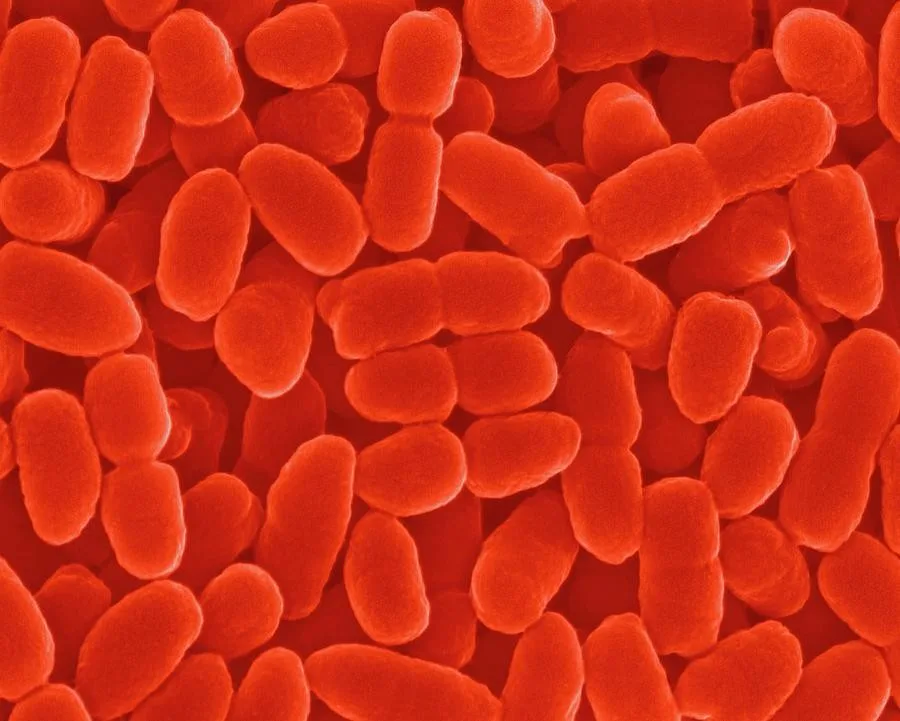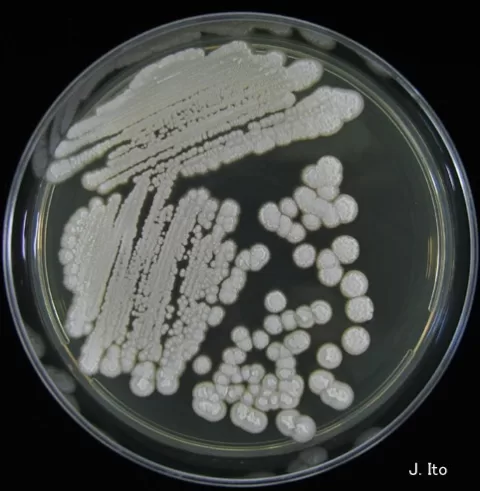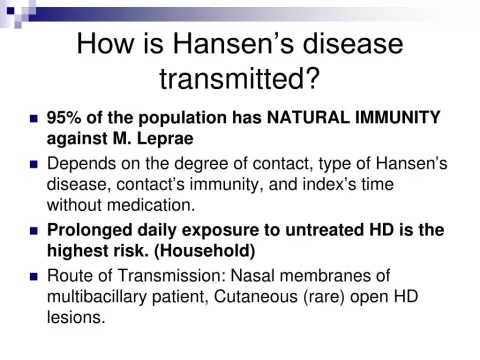Bordetella holmesii is an emerging bacterium that has recently drawn attention due to its association with pertussis-like illness in northern India. Unlike its more infamous counterpart, Bordetella pertussis, which causes whooping cough and is well-known for being a vaccine-preventable disease, B. holmesii presents a unique challenge as it frequently goes unrecognized in clinical settings. Recent investigations from 2019 to 2023 revealed a significant prevalence of B. holmesii among suspected pertussis cases, especially in older children, indicating a shift in the epidemiology of Bordetella species across the region. Furthermore, the COVID-19 pandemic’s disruption of routine immunization has raised alarms about potential upticks in vaccine-preventable diseases, including those caused by this lesser-known Bordetella species. It is crucial to enhance Bordetella species surveillance to understand better and respond to this evolving public health concern.
The recent emergence of Bordetella holmesii as a cause of pertussis-like symptoms signifies a growing need to reevaluate how we view respiratory illnesses related to Bordetella species. This bacterium, often overlooked in discussions about vaccine-preventable diseases, has started to be detected more frequently in clinical samples, raising questions about its role in public health. As we analyze cases of respiratory infections, particularly amongst school-aged children, we identify symptomatic overlaps with traditional pertussis, traditionally linked to Bordetella pertussis. Given the rising incidence of reported cases in settings such as northern India, there is an urgent call for updated surveillance practices and potential revisions to immunization strategies. In light of these changes, understanding the broader implications of all Bordetella species becomes essential to ensure effective prevention and management of related illnesses.
Understanding Bordetella holmesii and Its Implications
Bordetella holmesii is a lesser-known member of the Bordetella genus, which includes Bordetella pertussis, the primary causative agent of whooping cough. Recent studies highlight the emerging role of B. holmesii in causing pertussis-like illnesses, particularly in regions such as northern India, where the incidence of such illness is on the rise. With the re-emergence of respiratory pathogens and the impact of the COVID-19 pandemic, understanding the pathogenic potential of B. holmesii has become increasingly important. This bacterium, though not part of the current vaccination strategies, has been detected at significant rates in the patient population, suggesting that it may play a critical role in respiratory diseases in children and adolescents.
Surveillance efforts targeting Bordetella species have become vital, as the findings indicate a shift in the epidemiological landscape of respiratory illnesses. With B. holmesii showing higher positivity rates than B. pertussis among school-aged children in recent years, it is essential for public health responses to adapt and address the potential threat posed by this pathogen. Healthcare providers must be aware of the symptoms and diagnostic challenges associated with B. holmesii infections, as these cases can often resemble those caused by Bordetella pertussis.
The Rise of Pertussis-Like Illnesses in Northern India
The incidence of pertussis-like illnesses in northern India has garnered increasing attention due to a rise in cases attributed to both Bordetella pertussis and Bordetella holmesii. The country has seen a decline in vaccination rates and changes in healthcare accessibility due to the COVID-19 pandemic, which has likely contributed to this resurgence. Reports indicate that older children and adolescents, who may be less frequently vaccinated, are now presenting with symptoms akin to whooping cough. This raises concerns regarding the effectiveness of current immunization strategies that primarily target B. pertussis.
By analyzing respiratory samples from suspected pertussis cases, public health officials have been able to gather critical data on the prevalence and transmission dynamics of these pathogens. The findings emphasize not only the need for sustained vigilance against Bordetella species but also the importance of adjusting vaccination protocols to include protections against emerging strains like B. holmesii. Additionally, enhancing surveillance mechanisms will be essential in controlling these vaccine-preventable diseases and ensuring communities remain protected.
Vaccination Challenges and Future Directions
The vaccination landscape for pertussis in India traditionally centers around Bordetella pertussis, but the emergence of B. holmesii raises significant questions regarding the adequacy of current immunization strategies. Vaccines have been instrumental in reducing the incidence of vaccine-preventable diseases; however, the lack of inclusion of B. holmesii in vaccination protocols may leave a gap in protection for populations at risk. As evidence mounts on the prevalence of these infection-causing agents among young children, particularly those aged 5-10 years, there is an urgent need to reevaluate vaccination policies to accommodate the changing dynamics of respiratory infections.
Research efforts and enhancements in laboratory surveillance methods are crucial in this reevaluation process. Developing diagnostic tests that can distinguish between Bordetella species will aid in tailoring public health responses. Utilizing molecular tests such as PCR more broadly can help track B. holmesii and provide insights into its epidemiology compared to B. pertussis. Opportunities for vaccine development also present themselves, highlighting the need for new strategies that could incorporate multiple Bordetella species into routine vaccinations, thus improving public health outcomes and reducing the incidence of pertussis-like illnesses.
The Role of Surveillance in Disease Management
Effective surveillance systems play a pivotal role in managing Bordetella species infections and understanding the evolving landscape of pertussis-like diseases. With the notable increase in cases attributed to Bordetella holmesii, the implementation of robust surveillance programs that encompass both serological and molecular testing are critical. Regular monitoring can help differentiate between B. pertussis and B. holmesii infections, allowing health authorities to respond more effectively to outbreaks.
Furthermore, comprehensive surveillance not only provides valuable data for public health initiatives but also fosters an ecosystem of rapid response to emerging health threats. As we’ve seen with the impact of COVID-19, respiratory pathogens can quickly shift in prevalence, underscoring the need for adaptable and responsive health systems. By prioritizing ongoing Bordetella species surveillance, we can better understand their transmission patterns, inform vaccination strategies, and ultimately reduce the burden of vaccine-preventable diseases in northern India.
Identifying Symptoms of Bordetella Infection
Common symptoms of infections caused by Bordetella species can range from mild respiratory irritation to significant respiratory distress, resembling classic whooping cough presentations seen in Bordetella pertussis infections. Patients may initially present with classic symptoms such as severe coughing fits, respiratory distress, and paroxysmal cough, with some cases also displaying atypical respiratory symptoms often associated with Bordetella holmesii. Early identification and treatment are paramount to prevent complications, especially in vulnerable populations such as infants and young children.
Understanding the symptomology associated with these infections can guide clinicians in making timely and accurate diagnoses. Given that Bordetella holmesii may not always present with clear-cut indications of whooping cough, healthcare professionals must remain vigilant and consider this pathogen in differential diagnoses when faced with pertussis-like illness presentations. Educating caregivers about the signs and symptoms of these infections will also play a crucial role in increasing awareness and facilitating timely medical intervention.
Public Health Implications of Emerging Bordetella Species
The emergence of Bordetella holmesii as a significant contributor to pertussis-like illness has critical public health implications. As awareness of this pathogen grows, health officials must advocate for improved diagnostic methods and surveillance practices that can accurately identify not only Bordetella pertussis but also other Bordetella species like B. holmesii. The shift in prevalence toward this species raises questions about existing immunization protocols that currently focus predominantly on B. pertussis, necessitating further investigation into integrating broader vaccines.
Public health strategies must also account for factors such as changes in healthcare practices and parent adherence to vaccination schedules. The increase in education and awareness regarding the importance of vaccines against all Bordetella species will be crucial for preventing outbreaks. Ultimately, prioritizing research, surveillance, and educational campaigns will enable public health officials to address the challenges posed by emergent pathogens effectively.
Molecular Assays in Identifying Bordetella Species
The integration of molecular assays into routine diagnostic protocols is crucial for distinguishing between Bordetella species, primarily focusing on Bordetella pertussis and Bordetella holmesii. Utilizing advanced molecular techniques such as quantitative PCR (qPCR) enables rapid and accurate detection of these pathogens in respiratory samples, which is indispensable for timely public health responses. With the higher prevalence of B. holmesii being reported among different age groups, it is vital for laboratories to adopt these technologies to enhance their disease surveillance capabilities.
Moreover, the ability to quickly identify the specific Bordetella species involved in infections paves the way for targeted treatment strategies and better prevention efforts. By leveraging molecular diagnostic methods, healthcare providers can not only improve patient outcomes but also contribute to a broader understanding of the epidemiological patterns surrounding Bordetella infections. This knowledge is critical for informing vaccination strategies and ensuring that the public is adequately protected against emerging Bordetella species.
The Importance of Immunization in Preventing Bordetella Infections
Immunization remains a cornerstone of public health strategy in preventing Bordetella infections, particularly those caused by Bordetella pertussis. Vaccination programs are critical in controlling vaccine-preventable diseases, and as the data on Bordetella holmesii emergence becomes clearer, the importance of reviewing and possibly expanding immunization strategies is emphasized. Current vaccines provide protection against B. pertussis but do not include B. holmesii, which could hinder efforts to fully control pertussis-like symptoms in the population.
Therefore, comprehensive vaccination efforts should include research into developing vaccines that can provide broader protection. Increasing collaboration between researchers, public health officials, and vaccine manufacturers is essential for addressing the challenges posed by emerging Bordetella species. Public health campaigns that focus on the importance of thorough immunization schedules will be vital in preventing future outbreaks of pertussis and similar respiratory illnesses.
Frequently Asked Questions
What is Bordetella holmesii and how does it relate to pertussis-like illness?
Bordetella holmesii is a bacterium that has emerged as a significant contributor to pertussis-like illnesses, particularly in northern India. Unlike Bordetella pertussis, which is the classical causative agent of whooping cough, B. holmesii can cause similar respiratory symptoms. Recent studies have shown rising prevalence of B. holmesii, especially among older children, suggesting a need for increased awareness and surveillance of this pathogen.
How does Bordetella holmesii compare to Bordetella pertussis in terms of prevalence?
In recent research conducted from 2019 to 2023 in northern India, Bordetella holmesii exhibited greater prevalence than Bordetella pertussis among suspected pertussis cases. Specifically, during 2022-2023, B. holmesii was detected in 37.3% of positive samples, surpassing the 13.6% positivity rate of the classical pertussis-causing bacterium, B. pertussis.
Why is Bordetella holmesii not included in current pertussis vaccines?
Current vaccines primarily target Bordetella pertussis, which is the traditional causative agent of whooping cough. Bordetella holmesii is a relatively new discovery in terms of its association with pertussis-like symptoms, and thus it is not included in standard vaccine coverage. This gap in vaccination may contribute to the increased incidence of B. holmesii infections and highlights the need for revising immunization strategies to include non-pertussis Bordetella species.
What implications does the rise of Bordetella holmesii have on vaccine-preventable diseases?
The rise of Bordetella holmesii presents significant implications for public health regarding vaccine-preventable diseases. As B. holmesii is not encompassed by current vaccination protocols, its increasing prevalence could lead to a greater burden of disease that mimics pertussis. This situation stresses the importance of ongoing surveillance and a potential need for updated vaccination strategies to ensure comprehensive protection against various Bordetella species.
What role does molecular surveillance play in understanding Bordetella holmesii infection rates?
Molecular surveillance is crucial for accurately identifying and differentiating Bordetella species, including Bordetella holmesii. By utilizing advanced molecular techniques like PCR, health authorities can gain better insights into infection rates, health trends, and the epidemiology of pertussis-like illnesses. Enhanced molecular assays can help public health responses target not only B. pertussis but also emerging pathogens like B. holmesii, ensuring a more effective approach to controlling such respiratory infections.
What are the recommended actions in response to the emergence of Bordetella holmesii in northern India?
In light of the emergence of Bordetella holmesii, public health officials recommend integrating molecular testing into routine surveillance for respiratory illnesses. This would enhance the ability to detect both B. holmesii and B. pertussis, facilitating timely public health responses. Additionally, revisiting and potentially updating vaccination strategies to cover non-pertussis Bordetella species is advised to improve community protection against pertussis-like illnesses.
| Key Points | Details |
|---|---|
| Bordetella holmesii Emergence | Identified as an emerging cause of pertussis-like illness, particularly in northern India from 2019–2023. |
| Study Overview | Investigation included 935 suspected pertussis cases; PCR and serology were used for diagnosis. |
| Key Findings | B. holmesii was found in 143 samples (37.3%), surpassing B. pertussis positives in 2022–2023. |
| Impact on Vaccination | Concerns over vaccine coverage as current vaccines do not include B. holmesii. |
| Importance of Surveillance | Ongoing surveillance and improved immunization strategies are critical for public health response. |
Summary
Bordetella holmesii is emerging as a significant contributor to pertussis-like illnesses among children in northern India. This trend highlights the changing landscape of respiratory diseases in the region, particularly post-COVID-19, which has disrupted vaccination programs. With B. holmesii surpassing B. pertussis in prevalence, there is an urgent call for public health initiatives to adapt vaccinations and improve surveillance methods. Ultimately, increasing awareness and understanding of Bordetella holmesii is essential for mitigating its impact on pediatric health.
The content provided on this blog (e.g., symptom descriptions, health tips, or general advice) is for informational purposes only and is not a substitute for professional medical advice, diagnosis, or treatment. Always seek the guidance of your physician or other qualified healthcare provider with any questions you may have regarding a medical condition. Never disregard professional medical advice or delay seeking it because of something you have read on this website. If you believe you may have a medical emergency, call your doctor or emergency services immediately. Reliance on any information provided by this blog is solely at your own risk.








